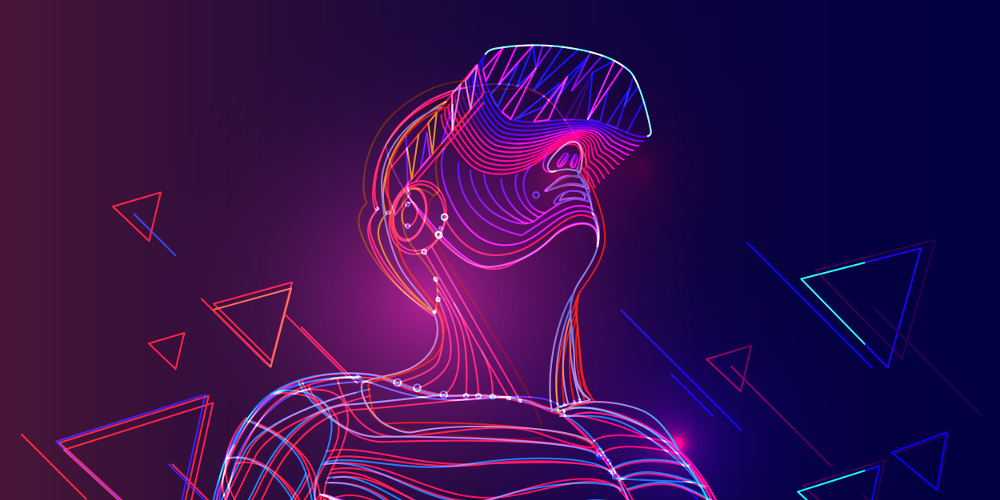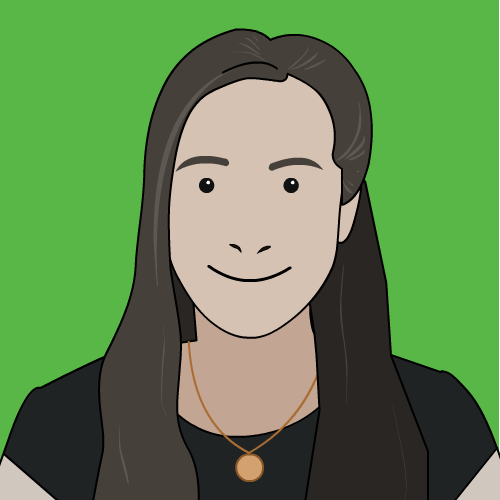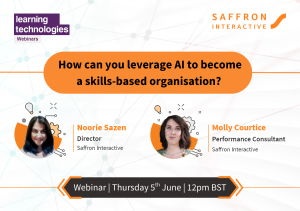The technological revolution is changing every aspect of our lives, and the fabric of society itself. It’s also changing the way we learn and what we learn. Factual knowledge is less prized when everything you ever need to know can be found on your phone. There’s no imperative to be an expert at doing everything when you can watch a video on YouTube and then emulate it, as so many of us do.
But how do L&D keep up with technology in a large enterprise and keep pace with the way that people are absorbing and using information? How can this still feed into the strategic priorities of the organisation – which themselves are constantly changing? How can all of this change be implemented quickly and make an impact as well as be cost effective? These are the questions that organisations have been grappling with, and they’ll only become more pressing over the course of the next few years.
I don’t have the space in this blog to talk about how we at Saffron are helping clients with the answers to those questions! I do, however, have time to talk about one potential angle of attack, sparked by the book I’ve been reading, Learning in 3D: Adding a New Dimension to Enterprise Learning and Collaboration by Karl M. Kapp and Tony O’Driscoll.
Anyone feeling that these issues are insurmountable should think about giving it a read, as the authors challenge you to embrace these changes. They suggest that the best way to do it is by taking advantage of the accelerated learning opportunities that the next big thing – virtual reality – can achieve, creating a VR learning culture and designing immersive learning experiences. Here’s how.
Creating virtual immersive environments
Kapp and O’Driscoll explore the learning potential of different ‘virtual immersive environments’ (VIEs) in virtual social worlds (VSWs). Some of this isn’t new. Cast your mind back to The Sims, one of the best-selling video games series of all time, with nearly 200 million copies sold worldwide. It shows that people enjoy the autonomy of living out choices – and the consequences – in different dimensions. This is classroom role playing or branched elearning played out at a supercharged level. Kapp and O’Driscoll petition L&D professionals to create learning experiences in similarly interactive worlds far beyond the office desk or factory floor.
Kapp and O’Driscoll also reference the virtual world Second Life. This was one of the first accessible virtual spaces to link the virtual to the real world using its own virtual currency, the ‘Linden Dollar’, which is exchangeable with real world currency. Nowadays, this transactional link between virtual and “real” currencies is everywhere, from gaming apps to cryptocurrencies such as Bitcoin.
But it’s not just about spending money. Second Life allows users to interact with places, objects and avatars. They can build, create and trade virtual property, as well as participating in individual and group activities. Kapp and O’Driscoll draw on Second Life to present a compelling argument for social learning, one which runs throughout their book.
Collaboration is key to getting real value out of VR. As much as we promote social interaction and collaboration in other digital interventions, the main problem with desktop and tablet learning is that you’re still very much rooted to a screen. It takes an imaginative learner to transport themselves out of the classroom or office.
This is where the case for AR and VR can’t be disputed. Immersion into a believable and almost real environment which requires physical action has been shown to increase the application of learning like no other intervention.
Hardly surprising research. We’re used to being transported to imagined, immersive experiences by a book, a descriptive narrative, a story, or a role play exercise. Augment this even further with aural and haptic input and you take the experience to a completely different level.
What is amazing about this research is how sharply the transference rates increase from video to VR… a great way to justify your business case! Of course, VR is not for everyone and the cognitive overload and potential accessibility issues it brings need to be borne in mind.
A shift in approach
Kapp and O’Driscoll provide their model for a 3D learning experience. A 3DLE is a highly immersive virtual learning environment in which learners act and interact in real-time to accomplish a challenge or task. In their book, they’ve outlined design principles, instructional strategies and overall macrostructures based on the 3D sensibilities experienced in VR/AR, like sense of self and space. They predict that 3DLEs will address the problems of formal learning and that virtual learning experiences will be used for organizational learning and training in the future.
Written in 2010, Kapp and O’Driscoll’s future is now, and we’re among several organisations developing VR for training. Virtual reality learning is already showing its benefit to the flipped classroom model and MOOCs. But reading this book, it’s clear that learning and development still has a long way to go to make virtual learning environments the norm.
For these virtual worlds to become a reality in the L&D industry, there needs to be a serious shift in approach to training and development in the workplace, Kapp and O’Driscoll highlight that ‘to spark innovation and create an adaptive enterprise, work structures will have to be revisited and work processes will have to be redesigned to cultivate learning.’
They share their understanding of fostering a ‘generative learning culture’, where employees share best practice and knowledge about tasks that are new and constantly evolving. This type of learning involves not merely absorbing existing information, but creating innovative solutions to problems whilst in the safety of a virtual world.
The problem is, many L&D professionals have never experienced virtual reality for themselves. It’s difficult for them to see the application of VR in business within the confines of their company’s learning culture. The book helpfully provides a maturity model to help change the learning culture, which I will briefly cover.
Unlocking potential
In the close of what is a comprehensive look at learning in 3D, Kapp and O’Driscoll introduce their own maturity model to support the implementation of 3D learning in organizations:
-
Level 1: Mimicking existing classroom structures
At the first level, instruction is based on replicating what is done in traditional educational settings. Much of the knowledge transferred could be delivered as effectively with 2D synchronous learning software.
To move beyond level 1, the thinking must be beyond the four walls of a classroom, and transport the learners to environments in which they apply their knowledge and skills.
-
Level 2: Expansion of existing learning structures
At the next level, the context is specifically designed for the learners to interact with each other and with the environment. The success depends on the construction of the 3DLE and how well the facilitator guides the learners on finding the learning opportunities.
To move beyond level 2, the essence of the situation must reflect the conditions under which the work is performed in real life.
-
Level 3: Practicing an authentic task
At this level, the learner is immersed in the task (s)he would perform in the reality of their work environment. The focus is on the application of skills. The success depends on how closely the learning events resemble the authentic work situation (including the role others play) and how effectively the learner is debriefed after the process to improve what (s)he is doing.
To move beyond level 3, the organization must consider how the VIE can be used to create work & products.
-
Level 4: Working life
At this level, it is all about the actual creation of value within the learning environment. It involves colleagues working together to create deliverables for in/external clients and learn as they create the final product. This level helps people to solve problems, network and gain new contacts.
These distinct levels show the potential of embracing the implementation of 3D learning in organizations. If linked back to the real world, such learning will have a real impact on our daily working lives.
So, dream big and take your learners to another dimension in 2018!
To hear more about VR in learning, and how we’re answering the pressing questions, book a meeting with us at the upcoming Learning Technologies show or visit Stand E9.





